-
Posts
692 -
Joined
-
Last visited
-
Days Won
1
Content Type
Profiles
Forums
Blogs
Gallery
Events
Store
Posts posted by Sal
-
-
I'm going to hang my hat on this one. From Bart on BMF- Admiral Sir William Jock Whitworth (1884-1973):
KCB - Birthday Honours, 1941
DSO - 1918
MiD - Great War
MiD - Birthday Honours, 1940
Grand Cross, Order of St. Olav - London Gazette 13-1-19480 -
-
Lucky enough to pick up this interesting mini bar. What intrigued me was not only the DSO with bar, but the LOH with the finial balls as brilliants (hard to see in the photo). Is this something that would be traceable based on the 2 x DSO and LOH??
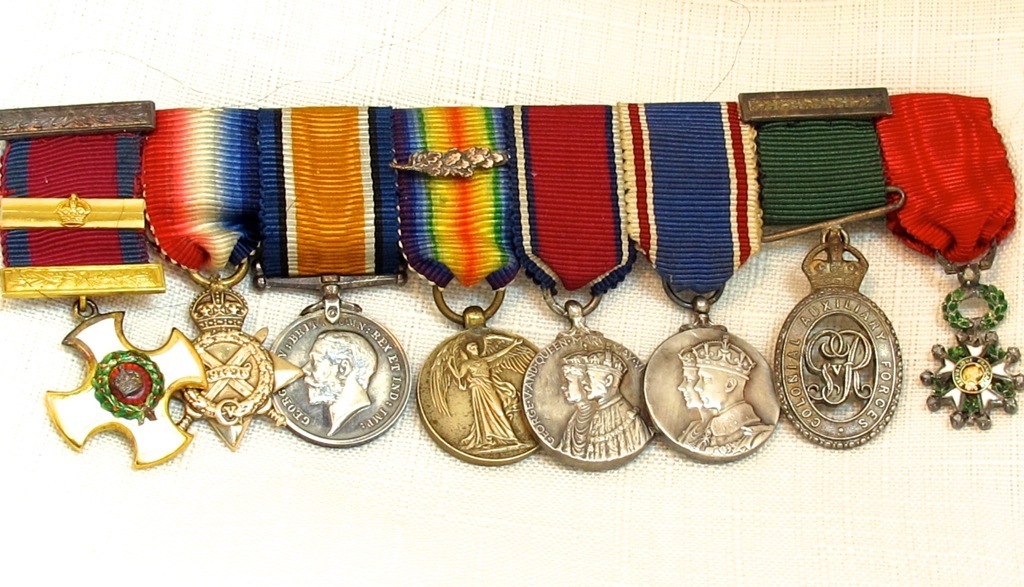 0
0 -
Still no luck, I have not been able to check all the boxes, generally all fit but will be missing an MID or the Olaf does not align with the award date....UUUGGH!
0 -
Is Sir Lionel Victor Wells a possibility? Or Sir William Jock Whitworth...served European War: 1914 HMS Cockatrice (destroyer) (despatches, DSO)
0 -
A nice narrow focus. Hey is it possible it was an RAF officer as well?
0 -
Hello Tony......
I would rather think that this is Navy rather than Army especially since it has an Atlantic Star.....
Mike
Thanks Mike, I didn't even pick up on that in my excitement; I appreciate that
0 -
Latest arrival....no info other than that the seller believed it belonged to a retired British Colonel who retired in Belgium. Is there any way to possibly trace based on the combination of orders including the Olav?
Many thanks
Tony
 1
1 -
My humble contribution
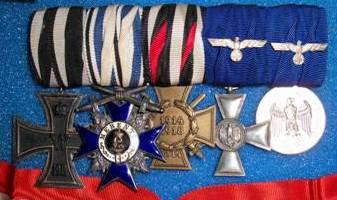 0
0 -
A little bit of information from the auction for his full size and mini bar
Arthur Hugh Bell was born at Hampstead 16/041878. Educated at Charterhouse starting in the Oration Quarter 1891. RMA Woolwich. 2/Lt Royal Engineers 23/03/1898 Lieut RE 14/02/1901 Capt RE 25/03/1907 Major RE 30/10/1914 Lt Col RE 06/05/1919 Col RE 11/04/1928 Brig RE (rtd) 13/10/1928 Son of Edward Alice Bell (nee Hoets) after his Military Career, became a Director of G Bell & Sons Publishers. He published A Few Articles in a Military Journal. Recreations Lawn Tennis, Swimming, Motoring and Golf. Brigadier Bell was fluent in French and Russian (Army List 1914). Served in the Boer War and later the Great War, in France and Flanders July 1915-February 1916. Wounded in 1916 he later served in the North West Frontier actions against the Mohmands and Swatis March 1917-August 1917. Awarded the Distinguished Service Order 03/06/1916. Order of the British Empire for services in India 1917-20 mostly in Waziristan. Asst Director of Works India 08/04/1919. Mentioned in Dispatches five times 15/06/1916- 18/05/18-11/06/1920 among the dates. He also served in Ireland during the period 1920-22
0 -
Gentlemen
Thanks so much for your comment and input. I have one other DSO mini bar in my collection to Brigadier AH Bell. I have done some reading on him but no requests for records so not researched yet. Was able to find a picture from the original auction that sold his full size bar as well as the mini I have, and so I use that as the only provenance until I have some time to research further. The DSO is gold vice the gilt one in the Gordon bar. Something about a bar (mini or full) with a DSO that is striking to me. Either way they are both great IMO.
Tony
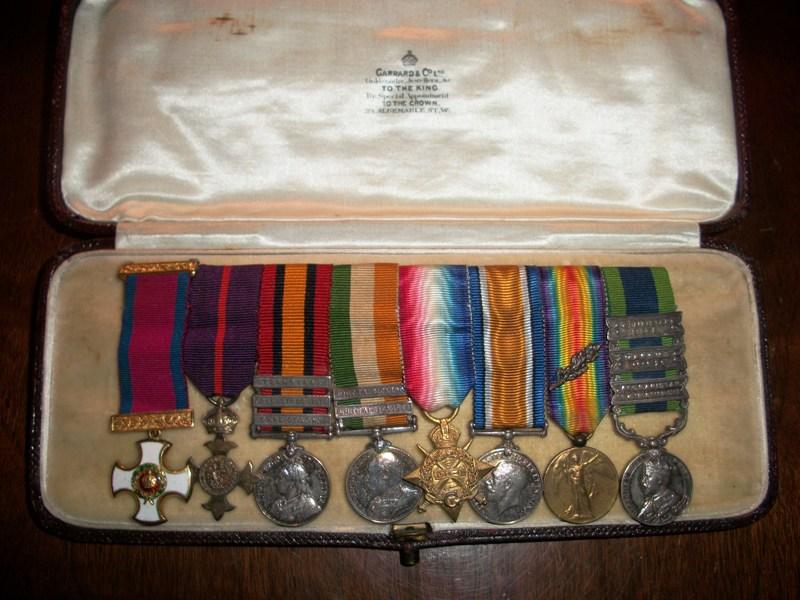 0
0 -
I have not seen them rim engraved, however, I wouldn't presume to say they cannot be found engraved.
0 -
Latest pick up
Brigadier General H.W. Gordon DSO, Royal Engineers. GORDON, H.W. ( D.S.O. London Gazette 1.1.1917 ); born 5.2.1871; died 5.1.1961 Edinburgh; 2nd Lt., R.E., 14.2.1890; Lt. 14.2.1893; Capt. 14.2.1901; Major 14.2.1910; Bt. Lt.-Col. 1.1.1918; Lt.-Col. 3.4.1918; Bt. Col. 1.1.1919; Colonel 1.12.1921; served South Africa War, 1900-02; European War; Despatches. His London Gazette entry:- London Gazette, 1 Jan, 1917. War Office. 1 Jan, 1917.
A little worn as you can see but I like that fact in this case. Have not researched any more than what the gentleman who owned it prior to me has sent me.
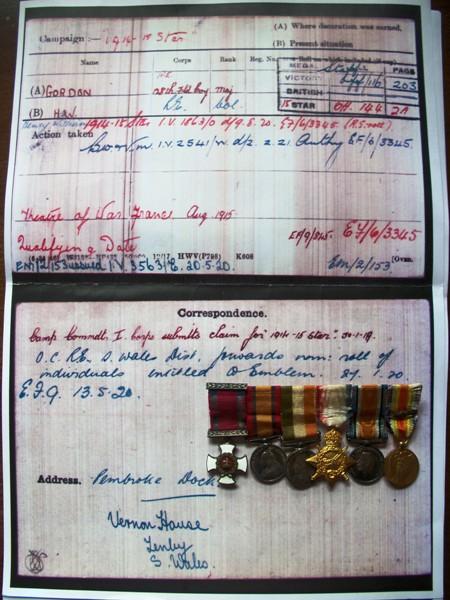
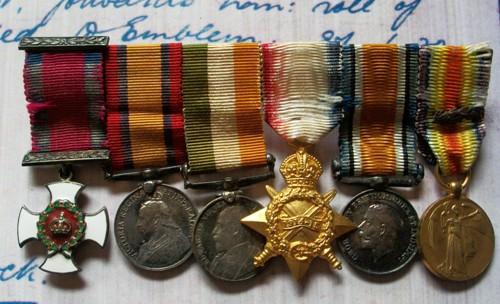
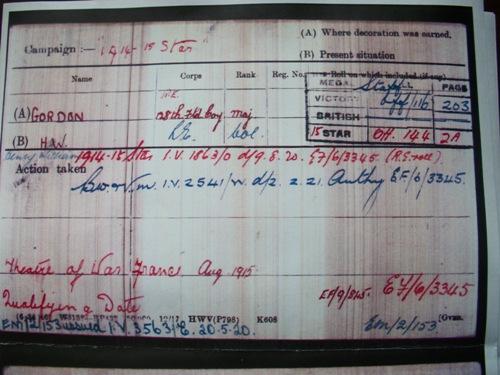
 0
0 -
Forgive my ignorance if this has been addressed elsewhere, but what is the significance between the kingdom era awards and republic era awards with respect to the number of rays on the stars of the badge. Kingdom has 7 and republic has 8. Thanks in advance
Tony
0 -
Some nuances to your observations. Yes, new regs have the SSI for FWTS located on the breast pocket. I doubt if he would, but GOs retain some ability (as I recall) to prescribe their uniform, so if he wanted to place the emblem out of location (unless that has changed since I left) he would be within his authority to do so. It is not likely on this uniform because of the appearance of impropriety, but I have seen it in the past for small subtle things.
Additionally, on the old time BDUs and pickle suits, SSI for 2d Armored Division was worn on the left breast, as GEN Patton wanted to keep Hell on Wheels close to the heart. At least that was the tradition my peers passed on to me who served in the 2 AD.
0 -
The dates of the 2 items from the contractor cardboard will tell the tale. Several possibilities here. If 2 different manufacturers and dates (periods), then color variation may be due to changes by the service in the color requirements. The detail on the smaller is better, but it looks like the female size IMO. Although I don't believe a contractor made 5 star sets in the event there was a female GOA. That being said, I believe 2 variations of from 2 manufacturers from different eras (and contracts).
Tony
0 -
James
That being said, I would think it plausible that my example is an un-numbered piece that was later numbered to make the pair into a set. I note that there is no "C" preceding the number on the Commander badge, which I surmise would be appropriate; or would I expect to see numbering only on newer issued pieces? I am convinced the 2 were joined to make a set, but trying to determine if the Commander badge is a legit awarded piece with the breast star added later or vice versa.
Tony
0 -
Very interesting James, thank you....I think you have solved it. I would tend to believe that the CVO was numbered as you say and joined with the star. There does not seem to be any indication that a previous number was removed and this one added, so is it plausible the star was not numbered and later numbered to match the CVO and make a set (assuming that foreign awards were not numbered, it is possible there was an unumbered specimen out there?)
While bothersome that it's likely put together, I do like each piece for what they are so at least they display well.
I am jazzed about the identification of my MVO, that is the little chestnut in this thread for me, so thank you again for that.
0 -
James, thank you for the information and insight. I have sadly not had the time to try to write for information on the awardees, so this is a great bit of information. Would you suppose then, from your information on the KCVO that the set was put together and numbered to make it more desirable or lend credence to it? I had some cause for pause when i saw the look of the numbering, but thought it might be possible these were joined by the Chancery from 2 returned pieces returned for higher grade appointments.
0 -
Navy obverse; so the obverse, brooch set up appear correct for Navy issue, but the uniservice reverse without the trophy of arms has me unless I am making a false assumption that the uniservice reverse medals had the Army trophy of arms....it is possible it's a later strike of the uniservice medal; Studley possibly? Need to float it by some folks more expert than I am. Sorry I cant be more help
0 -
Correct, the Mint produced medals for the Navy and some USCG issues as well. I think obverse design theory is quite valid and if JEff suggested it more correct than mine; is there the possibility the Navy used some Army contract planchets on their ribbon drape set ups and issued in their US Mint boxes in a similar manner they used Army PHs?
It would be an interesting study to determine the nuances of the Army contract vice US Mint strikes in comparison...and if the same differences present themselves on all US Mint Navy versions that do not present on Army contract strikes...as a means to determine Navy vice Army strikes when there is no obvious evidence
0 -
Need to see the obverse of the medal. Gleim's Medal Letters P136 indicates a uniservice version but specifically refers to an Army obverse and reverse, which would explain the straight "For Service"....but you would find US Navy over a trophy of arms vice the naval service emblem depicting the eagle and anchor. Clearly a contract strike (the tone of the planchet and some pitting on the face of the reverse) but I can't speak to the uniservice reverse but without trophy of arms....interesting. I believe it's re-ribboned on a split wrap brooch with open catch which would be correct for a Navy version but it is not the original set up.
0 -
Mervyn, that is perfect advice.....you are correct, the royal cypher will should impress, however I think some folks where I live don't even know where Great Britain is. I had planned to write the Chancery to ID the set based on the number. J Collins Medals has a Commander grade on ebay with a letter from the Chancery, I will try that address.
The interesting thing is that I bought them together as a set but the seller had no info or history. The control of issuance is what got me wondering about the 2 different crowns, although they both appear to be variants of the Tudor Crown, the time period of their use is what seems to cause me pause, however I do not doubt they are legit pieces,I'd like to ID and solve the mystery of the 2 variant crowns together. Until I get some information back, my thoughts are that they were manufactured at different times (thus the crown variations) and were numbered and issued together as a KCVO set without noting the difference.
Thanks for your help.
Tony
0 -
Here is my MVO (LVO) with same crown as seen on the star. It is numbered 373 and is also marked "4" and "373" on the reverse of the Collingwood & Co. case.
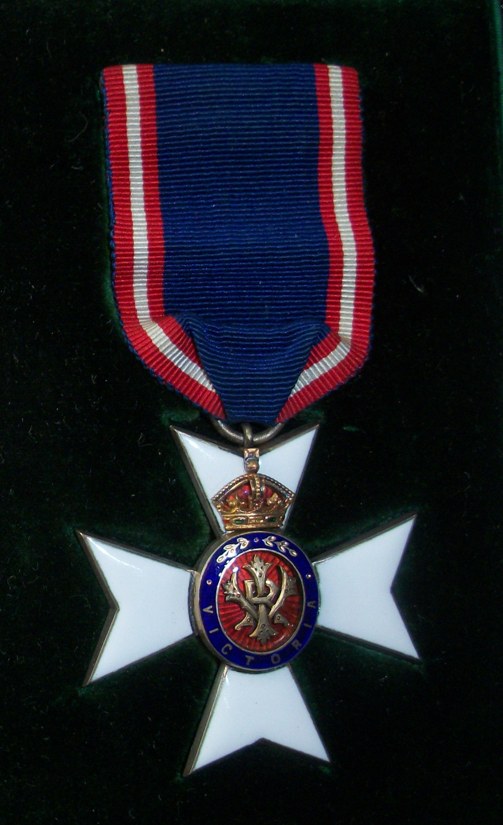 0
0




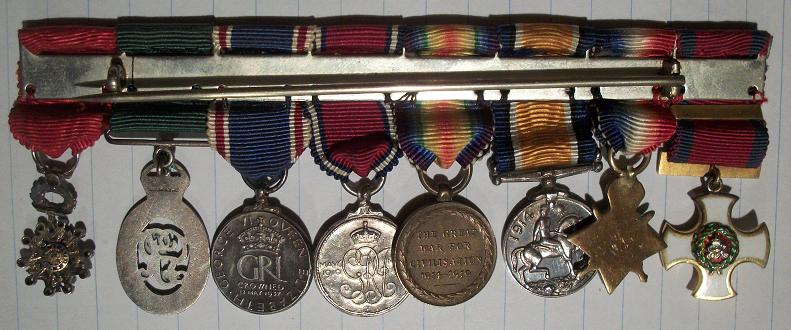
Order of the Bath/DSO/St. Olav Mini-bar
in Great Britain: Orders, Gallantry, Campaign Medals
Posted
Thanks all for your patience and help nailing this down.